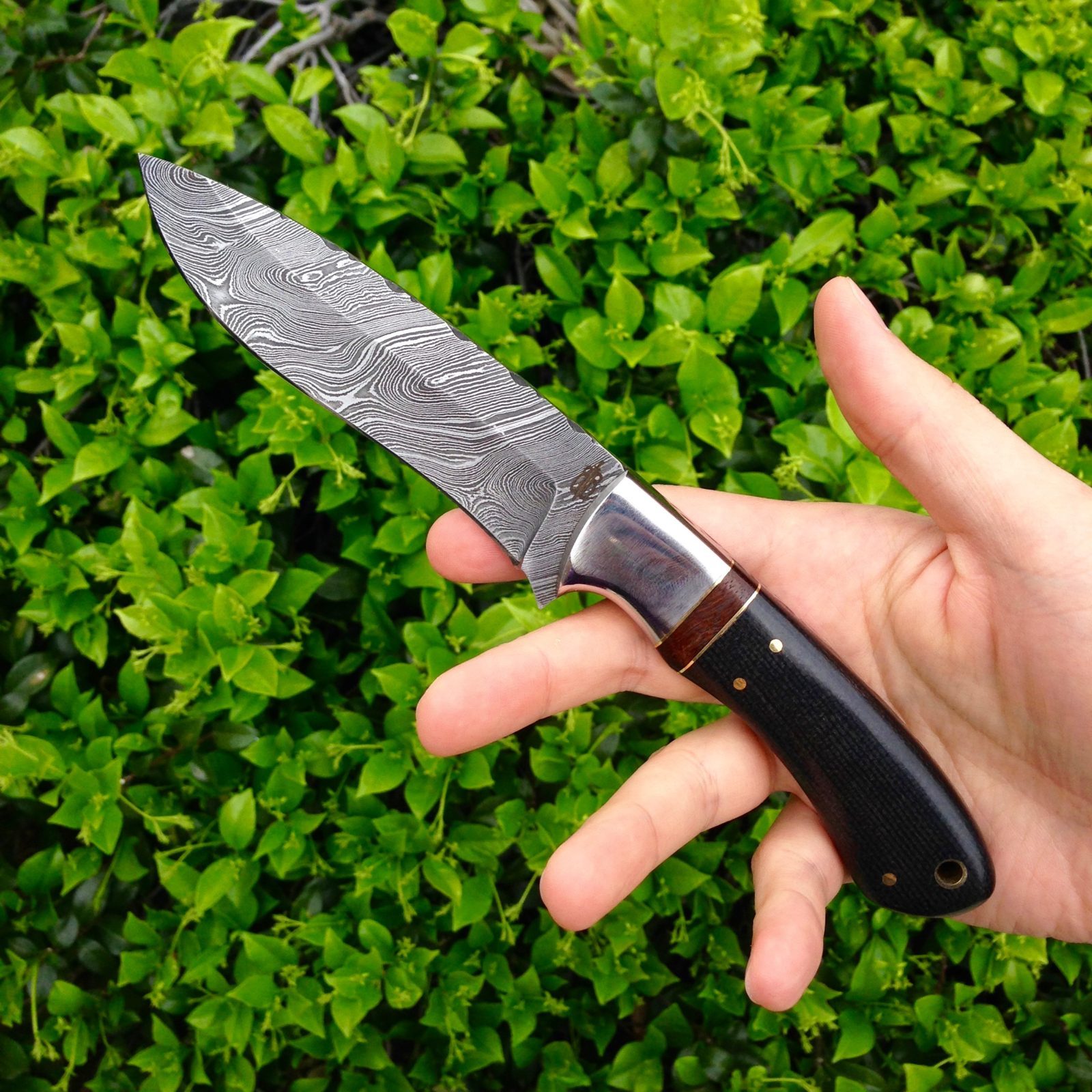
The knife world is, unfortunately, no stranger to fakes and frauds.
From people on eBay trying to pass off $400 Sebenzas as authentic to sellers on Amazon unknowingly peddling fake CRKTs and SOGs, counterfeit knives are everywhere. While I recently wrote a guide on how to spot a counterfeit knife, it didn’t address another popular question — is my Damascus knife a fake?
Damascus knives have exploded in popularity over the years, popping up everywhere from top-tier brands like Spyderco (think the Endura and others) to smaller names like BucknBear.
What makes people even more confused about the legitimacy of Damascus steel are the massive price differences. How can a $50 Damascus knife be “real” when other Damascus blades are priced at $500 or more?
Let’s dig deeper.
What is Damascus?
Before we get into spotting fakes, it’s important to understand what Damascus steel actually is.
Damascus is known for its distinctive wavy patterns—an exotic, almost hypnotic look that’s instantly recognizable. But getting that pattern the right way comes down to two types of “real” Damascus steel:
I’m simplifying this a ton, but there are two ways to get “real” Damascus steel: Wootz and pattern-welded steel.
Wootz steel
The original Damascus steel dates back to around the third century and was known as Wootz (among other names). It was a type of crucible steel made by melting pieces of iron and steel together in clay pots.
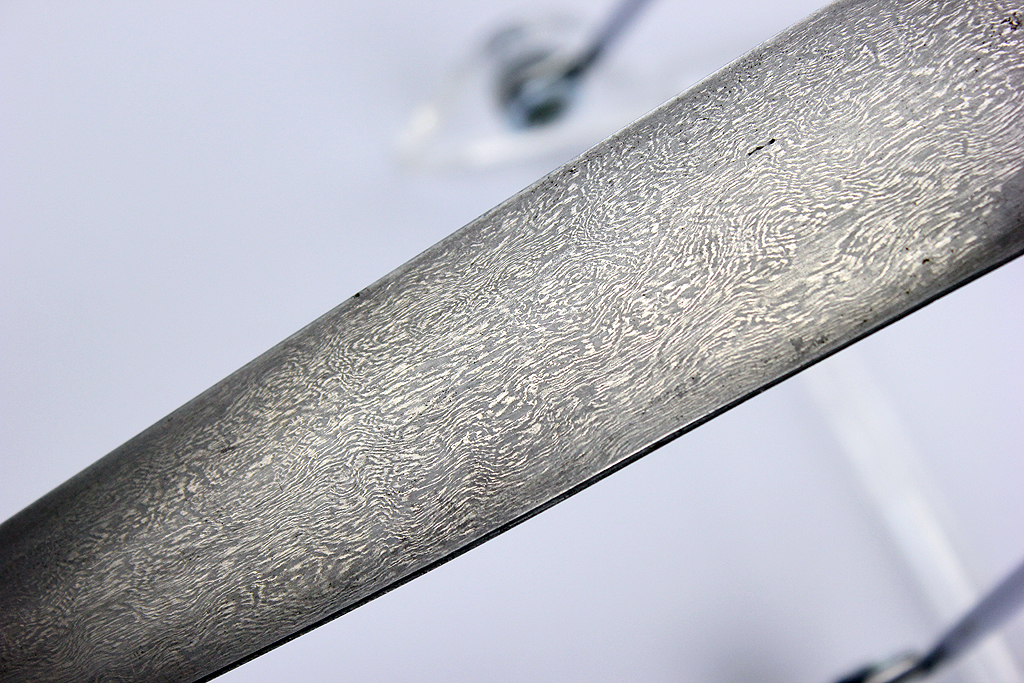
Here is an excellent layman’s explanation from The Association For Renaissance Martial Arts:
It’s produced by melting pieces of iron and steel with charcoal in a reducing atmosphere (lacking oxygen). During the process, the metals absorb carbon from the charcoal and the resulting alloy is cooled at a very slow rate. This produces a material with a visible crystalline structure of varying carbide contents. Forging the material into a desired shape (such as a sword blade) alters the crystalline structure into the familiar waving or watered pattern that Damascus steel is known for. This technique is extremely work intensive and requires a high degree of skill to keep the necessary temperatures constant throughout the process.
This process originated in India and was passed down by blacksmiths across the East before being introduced to Damascus, Syria. While there are plenty of theories about how the name “Damascus” stuck, we won’t get into that here.
The original method for creating Wootz Damascus was lost by the 17th century when the knowledge died with the blacksmiths who perfected it. Modern makers have done their best to replicate the process and have likely come close, but due to the unique soil composition and chemical makeup of the original steel, recreating true Wootz Damascus is virtually impossible today.
Pattern-welded steel
This is what 99.9% of people today are referring to when they talk about Damascus.
Pattern-welded steel is made by forging two (or more) different steels together—typically ones that complement each other in performance—and repeatedly folding them. The blade is then acid-etched to bring out the contrast between the different steels, creating that classic wavy pattern we associate with Damascus.
This technique actually fell out of use for centuries before legendary bladesmith Bill Moran revived it in the 1970s. Without him, modern Damascus as we know it wouldn’t exist.
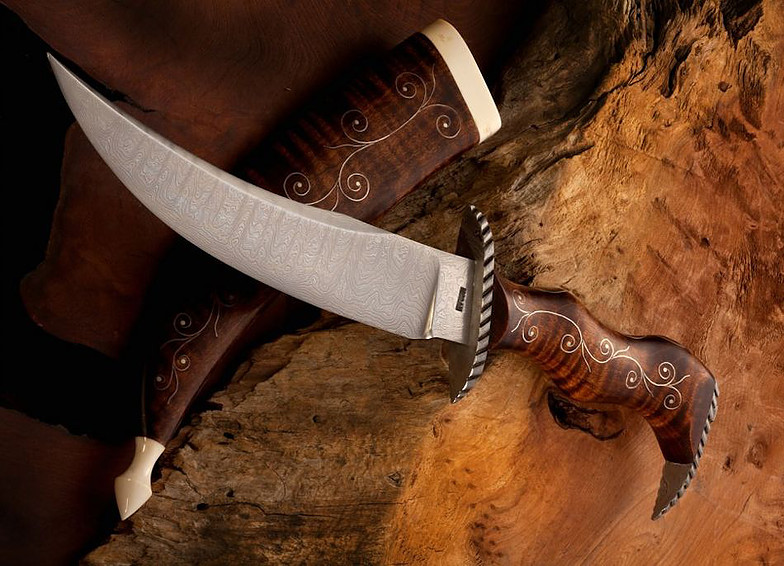
Here is an image of the Moran Fighter from The William F. Moran Jr Museum
You might also come across knives labeled “VG-10 Damascus.” In these cases, a VG-10 steel core is sandwiched between layers of Damascus, similar to the San Mai process (a method where three layers of steel are laminated together). It gives you the performance of a solid core with the beauty of Damascus.
If you’re still unsure about the differences between Wootz and pattern-welded Damascus, check out this video by Walter Sorrells for a deeper dive into both methods.
So, Is My Damascus Blade Real?
Some people insist that unless Damascus steel is made through the ancient Wootz method, it’s not “real” Damascus. Those people are wrong.
If your Damascus blade was made using pattern-welded steel and acid etching, you do indeed have a real Damascus blade. Considering nearly every Damascus knife on the market today is pattern-welded, it’s nothing to worry about.
That said, there are rare cases where unscrupulous sellers try to pass off plain stainless steel as Damascus by printing a pattern onto the blade. These fakes are usually easy to spot—the pattern either looks off or literally rubs off with use.
Real Damascus is intrinsic to the steel itself but fake Damascus is only a facade.
For a quick look at a fake Damascus knife, take a look at this knife presented by the great Nick Shabazz and listen to how he determined its inauthenticity (starting at 10:01 and ending at 11:40) :
You can surprisingly add etching that looks similar to Damascus to any old stainless steel knife with some nail polish and ferric chloride.
Still, many people have lingering concerns about the authenticity of their Damascus, so let’s tackle some of the most common questions.
Why Isn’t the Damascus Visible Everywhere on the Blade?
A few years back, I reviewed a BucknBear Damascus Hunting Knife. Some readers commented that the knife must be fake because the pattern wasn’t visible across the entire blade.
Here’s one comment:
The Damascus pattern only exists on the main sides of the knife. No pattern shows on the edges or the back of tang, i.e., the area between two sides of the handle.
True Damascus steel should be like those cakes that have colorful layers. No matter where you cut the cake, the surfaces show the pattern.
The truth is: real Damascus patterns can vary depending on finishing.
Sometimes, after forging and etching, the blade is polished in certain areas, which can make the pattern less visible. Or parts of the blade simply weren’t etched at all.
This video from BowieMaker shows how even real Damascus can look like plain steel—until you dip it in acid for a few seconds. In good light, you can still often spot a faint pattern even on non-etched areas, like the spine or file work.
I can see the pattern on the spine and file work of the BucknBear I have. It’s just not very visible.
What is that Residue Coming Off the Blade?
If you notice a black residue while cleaning your Damascus knife, don’t panic. That’s not the pattern rubbing off.
It’s usually leftover from the acid etching process, and it’s completely normal. That does not mean you have a fake.
Why is There a Huge Price Difference for Damascus?
Finding a Damascus steel folder for $40 doesn’t automatically mean it’s fake.
Just like any knife, Damascus varies wildly in quality.
Custom makers who forge Damascus by hand with precision and premium materials will charge hundreds (or even thousands) of dollars. Meanwhile, factories in Pakistan—where much of today’s affordable Damascus comes from—can pump out decent Damascus knives for much cheaper.
BucknBear, for example, confirmed to me that their Damascus knives are 100% real and made in Pakistan. While you can find some great knives at low prices, quality control can be hit or miss.
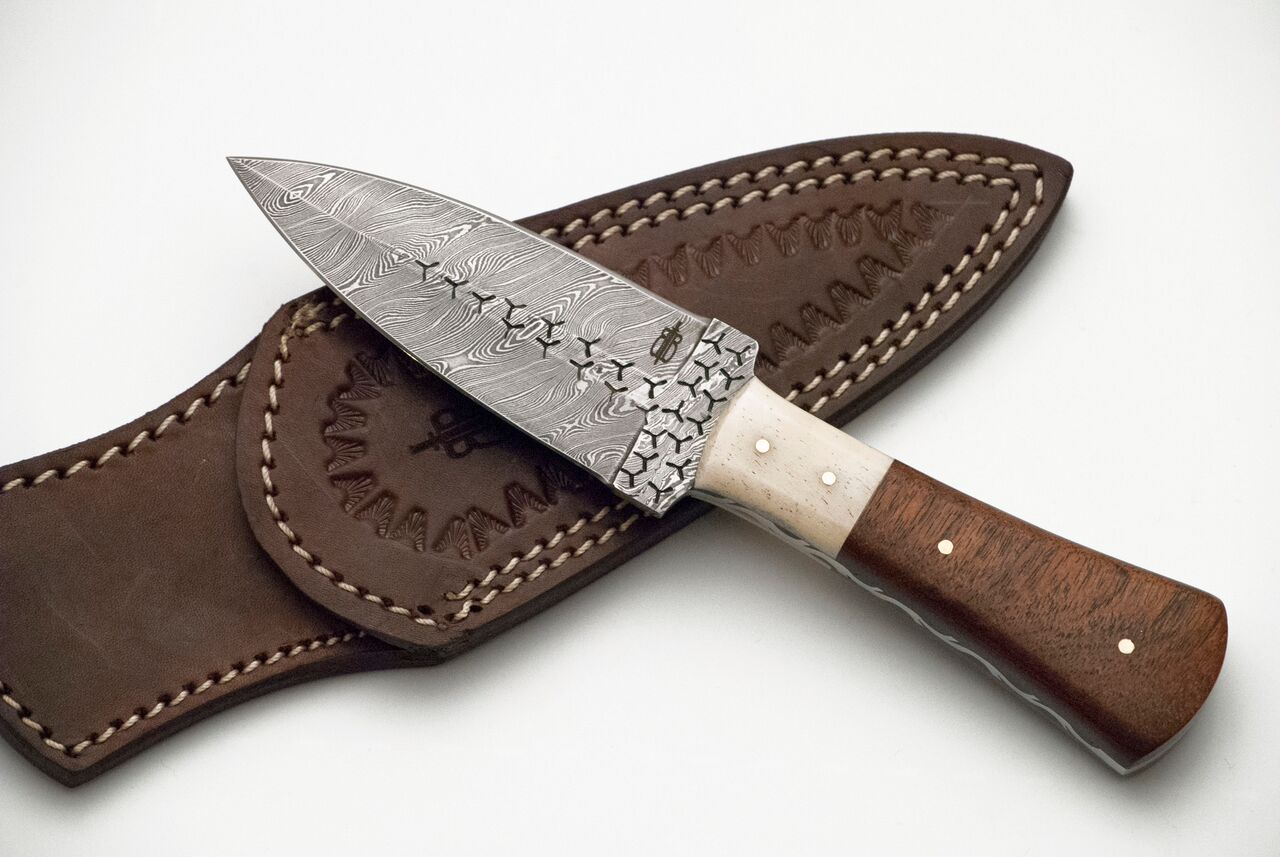
In short: cheap doesn’t necessarily mean fake, but be cautious.
Why Do Damascus Patterns Look So Different (or the Same)?
There are many types of patterns you can achieve during the process of making pattern-welded steel. Many of these have different names and looks — sharktooth, basketweave, typhoon, dot matrix, and more more. (Here’s a good look at some of the different patterns.)
You can achieve these specific patterns depending on how the steel is folded, twisted, and manipulated..
Most knives use a “random” pattern, which is why no two blades look exactly alike. Real Damascus tends to have its own unique personality, but some mass-produced knives will have very similar patterns from batch to batch.
How Do I Really Tell If I Have a Fake Damascus Knife?
If you’re determined to know for sure, there’s one foolproof method:
-
Completely polish the blade to remove the pattern (using fine sandpaper to achieve a satin finish).
-
Etch it with ferric chloride or muriatic acid.
(If you attempt this, I recommend reading advice from actual knife makers first for safety and best practices.)
If the Damascus pattern reappears, congratulations—it’s real! If not, you’re holding a fake.
Fake Damascus is rarer than you think, but staying informed will always put you one step ahead of scammers.
When it comes to Damascus steel, there’s a lot of confusion—but the good news is that most Damascus knives on the market today are real, made using the pattern-welding method. While true Wootz steel is a lost art, modern Damascus is very much legitimate and widely respected.
Fake Damascus (where the pattern is printed or artificially etched onto plain steel) does exist, but it’s relatively rare. If you want to be absolutely sure, a simple polish and acid etch test can reveal the truth.
At the end of the day, it’s all about knowing what you’re buying, understanding the materials, and setting realistic expectations. Stay informed, and you’ll be able to appreciate the beauty and craftsmanship of real Damascus without getting fooled.
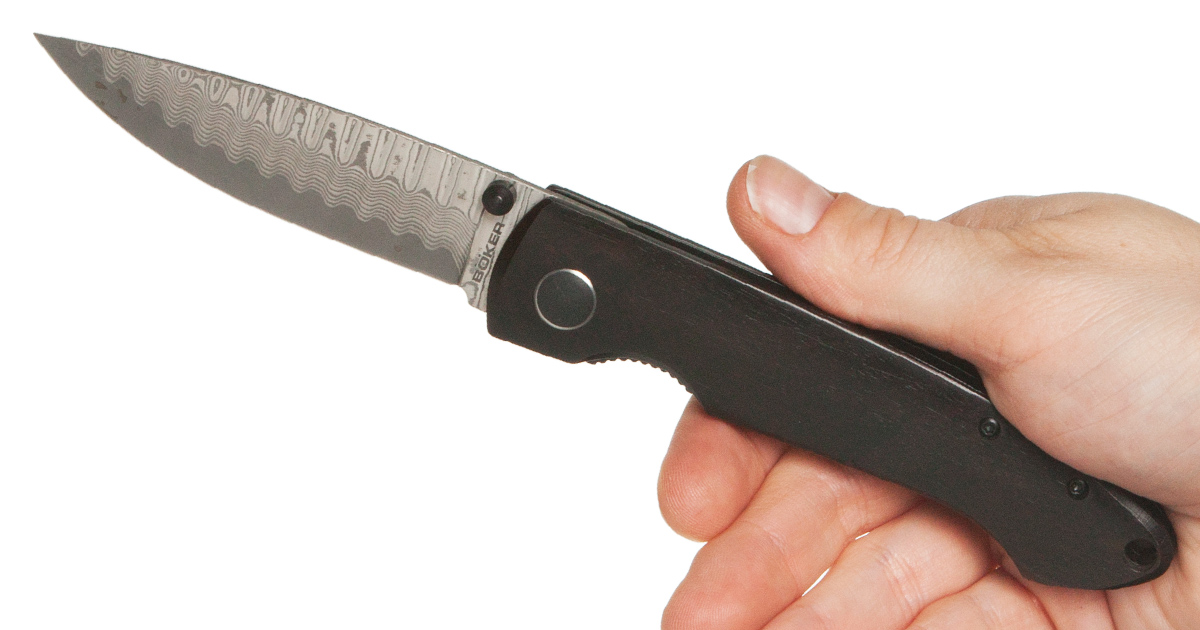




July 3, 2018 at 6:57 am
I beg to differ, IMHO, what we have here is Pattern Welded Steel, which is good but those who think that they have the original Damascus Steel, they are simply wrong. They are wrong for the reasons that you mentioned, the technique for making it was LOST (Or they did not have the same impurities in the material that they had before.). You said it yourself.
However, the main difference between what we have now and what they had then is that the real, Original, Damascus Steel has Nanotubes and nano filaments in it, which were responsible for the steels incredible strength. I continue to stress this point, because, while I’m sure that all appreciated the look of the steel, it was the strength in battle that made the difference. If you are honest you will also chose the strength over the look, any day, and especially if your life depended on it.
June 2, 2020 at 8:42 am
Most woots swords were not that hard actually if you look at ones in museums and study metallurgy. Many steels are superior. Also people saying that a Japanese katana is damascus are completely wrong. That is called a hada with hi and low carbon. Damascus as we know is one steel containing a certin % nickel to resist acid and one not having any nickel and when dipped in acid the pattern appears
May 9, 2022 at 5:03 pm
You can get the same result using different techniques. In all areas of life.
December 25, 2018 at 9:12 am
where do you recommend buying online ?
April 25, 2021 at 2:30 pm
From us
February 3, 2019 at 3:48 am
Wootz is not real Damascus. It just a modern day attempt to make it. The original way that actually produced the insanely strong blades were lost, and it ONLY works with ore from one specific mine in Pakistan, due to having the correct components in it.
February 4, 2019 at 9:07 am
I agree to a certain extent and covered all of what you said in the post. However, these days, real Damascus is essentially pattern-welded steel now.
February 18, 2019 at 9:02 am
I bought a Mini Damascus knife on Gearbest for about 12 dollars.Do you think it’s fake ?
February 18, 2019 at 9:20 am
It’s impossible to say without actually seeing it, but there’s a very good possibility it’s a fake.
October 4, 2019 at 4:22 pm
Actually a couple of Syrian brothers and some dude in Florida are the only three left.
July 20, 2021 at 9:14 pm
Historians have since found this to be false. They now believe that the steel was not found in a min in Pakistan or anywhere in India thought they did produce some. Wootz was only produced in modern Day Syria in a mine about 80 miles south of Damascus. Sal Hadin or Saladin as he was known in the west had a castle built on top of this mine and produced the WOOTZ steel. Wootz is different because it gets fully melted down unlike other types and is air cooled and then reheated during the hammering process. The reason for the belief it was made in India first was because that is where western people first encountered it. Al Pendary is the only one who was able to consistently make blades that under a microscope where similar to those that are now in museums. Wootz is also unique in that it was a very small amount of veridum in it, and the way the carbites are layered. There is a great video on “Damascus Steel” called “The Secrets of Wootz Damascus Steel.”
May 17, 2023 at 6:12 am
Very dumb
October 2, 2021 at 11:00 am
That’s not correct. We have recreated Wootz / Damascus, and have verified it at the micro-cellular level under scanning electron microscopes. Random dudes in a shack are making it now. It is not rocket science, and it definitely can’t be ‘lost’ – there’s only so many ways you can skin a cat.
What we see here is pattern welded steel. Which is pretty – but not damascus. Damascus steel is wootz crucible steel that is processed to break down the dendrite and inclusion structures into what some call ‘watered steel’.
August 26, 2022 at 12:27 pm
100% correct, so many just don’t get it… I mean people in India were making it two thousand years ago, I think modern people can as well.
On a side note, meant as only a joke as I know you are using it as a proper noun to describe the type of steel, “Damascus steel is wootz crucible steel” soo, Damascus steel is steel crucible steel? Wootz ( உருக்கு) means Steel in Tamil.
February 26, 2019 at 8:00 pm
I bought three “Japanese Damascus “ paring knives Made in China from a seller on eBay. It is clear to me that they are imitation Damascus using a cheap etching.
eBay seller says they are real despite the etching washing of very easily. Any advice to prove they are fake. Thanks
February 27, 2019 at 9:29 am
If the etching washes off pretty easily, then that means you should be able to re-etch it as well. You can etch them yourself with ferric chloride or muriatic acid to see if the pattern reemerges.
September 16, 2022 at 5:38 pm
Dont buy made in china crap
March 25, 2019 at 12:38 pm
What if the sharpened edge doesn’t show a pattern? Is that a sign of a fake?
March 25, 2019 at 2:40 pm
Not necessarily. Because the edge is sharpened, the acid-etching fades to become nearly invisible. If you re-etch it, it should be visible. It’s also possible that the blade is San Mai, which is laminated.
June 8, 2019 at 8:28 pm
No mention of labor cost overseas. The same knife blade can be made overseas for a fraction of what it costs to make it in the US because of labor costs.
Companies, good knife companies even, figured this out years ago.
August 20, 2019 at 3:30 pm
I want to know what blade steel is used.
If not stated I consider the blade is inferior.
Geo.
August 21, 2019 at 5:10 am
I’m looking for a specific type blade, to do circumcisions. It must be very sharp and able to retain an edge. Suggestions?
September 28, 2021 at 12:38 pm
Trump lost, get over it.
January 20, 2022 at 10:57 am
Biden Cheated! Get over it!
August 21, 2019 at 6:47 am
The Woots is not a Damascus at all! Completely, dramatically different technology!
Also, Wootz secret was lost, Damascus secret WAS NEVER LOST! Damascus is a simple a composite of different steels by “forged” welding, as minimum two different metals: high carbon and low carbon. All Japanese swords are the type of Damascus, etc…
Wootz is just an alloy, not welded or forged layers…
September 10, 2019 at 8:22 am
Above all mentioned you still did not tell how to check if it is real Damascus steel. Ones in Uzbekistan I saw Damascus blade and I was surprised by it’s superb qualities. Only after that blade I understood that Damascus secret is LOST. People confused about look vs quality of the metal.
You can ” simply a composite of different steels by “forged” welding, as minimum two different metals: high carbon and low carbon”, but it will never be a Damascus.
September 18, 2020 at 5:28 am
First of all it’s steel not metal you should learn the difference. Also he did explain how to tell if it’s “real” damascus and that is to polish the blade down until the pattern is no longer visible, then you would have to re-etch the blade in acid to get your “damascus” pattern back. If pattern does not reappear after etching then blade is not “damascus”.
December 22, 2019 at 12:01 pm
I have a hooey knife and just curious if anyone was familiar with that brand and weather they are actually Damascus blades
September 30, 2020 at 10:04 pm
Hiello. I just purchased 2 Brett Martin Damascus knives (supposedly). I came across a blog where the conversations were stating this man’s knives are fakes, probably from Pakistan, and that he has no FB page, which he does not. I’ve seen very few websites selling his product, but no commentary on the quality or anything of the the maker. One was advertised on Amazon, when I clicked visit, the product popped up but then instantly disappeared. I then did Amazon’s search, but absolutely nothing came from this Brett Martin. There is one on Pinterest, but not wanting an account with them, it does not provide a price . Worthpoint is another site, where their items are absolutely authentic. As a matter of fact, if something’s posted on Worthpoint, you can be sure ithe item has somewhat higher to high value. I cannot afford the $400 a year subscription fee in order to find out their selling price just for an occasional inquiry. The cover even has his name engraved in the leather, (which has a very strong chemical-like odor, not the smell of leather I know. My gut tells me this Brett Martin is a fake, and I definitely have no way to do the described testing. Ivan anyone please tell me if they’ve heard of this maker, or that it’s only presented with his name and is truly a fake. Thank you in advance.
October 31, 2020 at 5:06 pm
Even though Damascus steel is available on eBay for $30, I decided to try my luck buying directly from the knife maker in Pakistan. Paid $60 for a skinner knife, and when I got it, I was pretty impressed by the quality. The eBay stuff, you never know what you are going to get. But just as all arists vary in talent, if you find a talented knife maker in Pakistan, you can get some very nice work relatively cheap.
One thing that was different about this man’s blades and the stuff on eBay, the eBay stuff all appears to have very wide bands, indicating not many “folds”, whereas this guy’s blade looks much more like higher quality Damascus that has very, very thin bands, with not a *lot* of contrast in darkness. The steel is uniformly colored and the difference between the bands is subtle. The cheap eBay stuff looks almost like zebra stripe.
November 13, 2020 at 8:03 pm
So who were you buying from in Pakistan and how could I contact them?
February 18, 2021 at 6:41 am
I am also interested
April 30, 2023 at 10:23 am
One thing about eBay is their 30 Day buyer protection for items not as described. And eBay also does not allow the sale of fakes. As an eBay seller I had a return of authentic Harley-Davidson women’s pants (bought by a man) because “they don’t look authentic. I was stuck with paying shipping both ways and a full refund. So, there is that protection.
December 20, 2020 at 12:54 pm
The author smugly states that those who hold that pattern-welded steel are “simply wrong,” he himself is deeply misguided. When an error is repeated often enough, it becomes accepted as truth. Another example of this is when people day “decimate” when they mean devastate. Decimate means to reduce by one tenth. This was what was done to a Roman legion that performed badly in battle. They killed every 10th man to motivate the others. This is the case here. The structure of the two steels at the microscopic level are completely different. In the video, Walter Sorrells repeats and compounds these erros. He says that English gun & knife makers referred to pattern-welded steel as Damascus, as if an error becomes more truthful because it was made 160 years ago. There are many references (as far back at the early 19th century) where the authors clearly state that what was being passed off as Damascus (pattern welded steel) was not true Damascus (Wootz/crucible) steel. The original makers of Wootz steel in the Middle East & Asia did not call it “Damascus.” That term was applied later by Europeans. The term was later bastardized to pattern-welded steel that approximated the cosmetic appearance of Wootz steel, but was structurally and functionally very different. I do not dispute that pattern-welded steel can be very aesthetically appealing, and time-consuming to produce, but it does NOT have the same characteristics at true Wootz/crucible steel.
June 12, 2021 at 9:46 pm
Can you stop riding your hobby horse about the “real meaning” of decimate? Because it meant to kill 1/10 in Caesar’s day has no bearing on its meaning today. Is December the 10th month of the year? “Decem” = 10 in Latin. Word meanings shift over time. Get over it.
“Deer” in English used to mean “animal,” i.e., any wild animal. Now it is applied only to “slender-legged, even-toed, ruminant mammals (family Cervidae, the deer family) having usually brownish fur and deciduous antlers borne by the males of nearly all and by the females only of the caribou.” Are you going to insist that you can apply “deer” to a badger or skunk or mouse and be understood? You could profitably spend time with a dictionary, reading not only the definitions but the etymologies. M-w.com would be a good place to start.
February 4, 2022 at 8:55 am
Thanks for that laugh, and your time writing that^
February 20, 2021 at 12:06 am
Thank you for this very helpful article. I recently purchaed a knife from a brand called ROM knife, anyone knows about this company? Are their knives any good?
March 12, 2021 at 2:08 pm
I’m curious of the knife brand at the top of this blog the reverse b katana b, asking for a friend, is their damascus legit?
July 30, 2021 at 4:08 pm
I purchased my Damascus steel knife from Stauer. Is it real or fake?
January 19, 2022 at 9:16 pm
Such a great and awesome post I must say that. Thank you for adding so much value to my life.
May 18, 2022 at 4:43 pm
If the sharp edge of the knife has no etching, does that mean it’s counterfeit?
September 7, 2022 at 10:11 pm
No. It could just mean that it was sharpened after it was etched. As stated above, the only way to really tell if it’s authentic is to sand/polish off the pattern completely and then dip it in ferric chloride or muriatic acid for a few seconds. If the pattern reappears, it’s real. I wouldn’t suggest it though, unless you know what you’re doing. Etching and finishing damascus steel blades is an art.
May 17, 2023 at 7:01 pm
EDIT* You could try rubbing lemon juice or something acidic onto the edge and see if it darkens in a way consistent with the pattern on the rest of the blade. This could be a less invasive way of testing it.
December 1, 2022 at 8:20 pm
Does anyone by chance have any recommendations as to where the best platform to resale Damascus Blades is? I purchased wholesale some beautiful brand new blades about 15 Damascus Steel blades Tang, Skinner etc. the whole variety however posting them on Facebook market place. ebay & offer up All banned me banned my account for listing “weapons” I was told? But I see other accounts that sell knives so I’m a bit confused, I even got smart & tried to categorize it as “Kitchen Knives” on facebook Marketplace after being banned by ebay, but Nope, DENIED. Guess that’s what I get for thinking I’m smart. It’s obviously, not my Normal Niche I normally just resale Baseball Cards but was really digging these blades and would like to sell them just wanted to learn the market before creating another website besides my baseball cards so been hanging onto them ever since because I don’t know what platform to sell them on. any suggestions would be greatly appreciated.
March 2, 2024 at 7:35 pm
We did you get wholesale knifes from?
May 16, 2024 at 12:12 pm
This is an interesting article and has shaken the hornet’s nest. I don’t know anything but surface knowledge of Damascus steel. The ones that I have come from major manufacturers.
The last photo shows the Boker Plus Gent II, and I’ve also wondered about that knife. One side reads, “37 layers,” which might be nice for marketing.
May 17, 2024 at 2:34 am
I only came to the comments to learn the true meaning of “decimate!” 😆